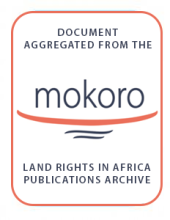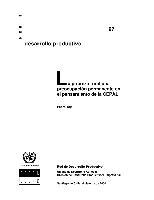Land Library Search
Through our robust search engine, you can search for any item of the over 73,000 highly curated resources in the Land Library.
If you would like to find an overview of what is possible, feel free to peruse the Search Guide.
/ library resources
Showing items 1 through 8 of 8.Growing commercial interests;population growth and conservation initiatives are increasing competition for land in Tanzania. At the same time;land-related conflicts are on the rise. These trends undermine livelihoods by threatening rural people’s access to land and tenure security.
Focuses on tackling land issues in post-conflict states. Root of problem is that most rural populations are little better than squatters on their own land in the eyes of the law. Remedy is to acknowledge customary land rights as equivalent to private property rights.
Malawi, like other countries in Africa, has a new land policy designed to clarify and formalise customary tenure. The country is poor with a high population density, highly dependent on agriculture, and the research sites are matrilineal-matrilocal, and near urban centres.
Divided into 7 sections: introduction – tenure insecurity, poverty and power relations; the subordination of customary land rights; attempts to make amends; an end of century turn-around – towards the liberation of customary land rights; launching reform through new policy and law; the need to as
Proyecto Opciones de Políticas para el Fomento del Desarrollo de Mercados de Tierras Agrícolas, con el Fin de Facilitar la Transferencia de Tierras a Pequeños Agricultores
Resumen El propósito de este documento es incentivar un debate sobre un tema poco discutido en la región.
Resumen En este documento se aborda el tema de la pobreza rural en la historia de la CEPAL. Para ello se recurre a los principales documentos y declaraciones oficiales que dan cuenta de su pensamiento. El resultado es un cuerpo de ideas que sin duda no es ajeno a las tareas del desarrollo.
Provides a micro-level foundation for discussions of income and asset allocation within the smallholder sector in Eastern and Southern Africa, and explores the implications of these findings for rural growth and poverty alleviation strategies in the region.




